Hello friends—
sharing a post from the archive—on breath, winds, solid ground, and the connection between what is material, and what is not.
As I write this, a moose has been bedded down outside our kitchen deck for a few hours this morning. Her eyes closed slightly, amazing, thick velvet ears telescoping at the sounds heard from our house—the dogs (always), doors closing, feet upstairs crossing the room loudly. I never tire of seeing them, of the still surprise as they appear in this suburban neighborhood, walk into the yard, move on behind the house into the small greenspace that opens out eventually to the coastal flats. As it settled down and tentatively began to close her eyes, her breath huffed softly on exhale—wind that moves in and out of all of our bodies—made visible in the cold.
I read once long ago that the roots of the word ghost come from Old English gast—meaning breath. It was used to translate Latin spiritus (spirit)—evident in the term Holy Ghost. Somehow it stuck in my head that this idea came from seeing one’s breath in the cold (at least for northern Europeans)—the ghost within us made briefly visible.
But there’s another Old English word related to breath—blæd, meaning a spiritual breath, or wind. Eleanor Parker writes of this, relaying that this root became multi-layered—and yet all layers came from ideas of breath, wind as life—the west wind giving life to new plants and trees in the spring. Spirit itself as breath, as life-giving. Blæd is also the word for leaf, which also ties to the same roots as bloom. It’s apparent in blades of grass, for instance. So these roots of words—between wind, breath, spirit, blown and bloomed—leads also to ideas of growth, prosperity. Full-blown, for instance. Or as Parker writes: “Think of Shakespeare: ‘I know a bank where the wild thyme blows…’” Between and through blæd and blowað, she writes that “we get blast, blow, bloom, blossom, blade—all a life-bringing breath, a spirit of creation.”
There is not much blooming here, but I did manage to get out to walk the bluff not far from here, where mountains border the views across Tutl’uh (Turnagain Arm). Snow is still on the ground deeply, but south-facing patches are becoming braver in the hours of sunlight that arrive here and then, revealing patches of grass. Brown from last fall, waiting for the breath that will bring new green to their blades.
I began to notice how nice it felt to walk on solid ground, the earth again, rather than the slush and ice of snow lingering above it for so many months. Taking after a friend, I’ve begun writing one-sentence a day1, and I wrote for this day:
Noticing how good it feels to walk again on solid earth, patches revealed in southern exposures where the snow is just beginning to recede.
Later—or early—the next morning we were woken around 4 am by a short, abrupt shake of an earthquake. And thus the following, sheepish sentence that next day:
Nothing like being woken in the dark of morning by an earthquake to remind you that there is no solid ground.
I thought of Annie Dillard’s Holy the Firm, how she writes about an idea that there is a conduit between the material and the divine. I like that it has to do with holding space for mystery—that the world is much more than we can see or know. So I took my confidence in the feel of that solid earth coupled with the earthquake as a reminder of both material and transcendent mystery. Neither of which should be ignored or dismissed.
And so I began to think through the days as if experience were an alphabet. David Abram, quoting Merleau-Ponty, writes,
It is no more true that we speak than that the things, and the animate world itself, speak within us: ‘That the things have us and that it is not we who have the things...That it is being that speaks within us and not we who speak of being.”2
A reminder of all that speaks within us—the wind, our breath, our surroundings, interactions. I began to think it wasn’t so much the pleasure I noticed in walking on patches of newly-revealed earth in the melting snow, but the reveal of the blades of grass, waiting for breath, bloom. Walking on those blades, sharing in that anticipation—maybe that is what I felt more of as I walked in high sun blinding off the snow: a feeling of anticipation, that things are changing. The reassurance that spring will arrive.
There are winds up today, and the words for wind and breath are still strong in my mind as they blow—a collective breath that we all take, moving through so many, many bodies, exhaled and inhaled, our spirits colliding and affected by all that is around and within us. Whispers through bodies and blades and future blooms, through the bedded down moose and my own exhalation as I stress about bills, taxes, etc.—all the other ephemeral blades of life that demand attention. It feels rude and unholy to think that the leaves of even ephemeral, digital paper we rely on as proof, as evidence, as bureaucracy, as currency, come from the same ideas of leaf and blæd.
But maybe it is all simply life, being, breathing. There are so many things being said to us beneath the surface if, when we pay attention. If and when we could pay more attention. It’s not exactly easy in this world of digital hustle.
Abram later cites a tradition recorded by James Kale McNeley in his book Holy Wind in Navajo Philosophy:
[A]ccording to the Navajo conception, then, Winds exist all around and within the individual, entering and departing through respiratory organs and whorls on the body's surface. That which is within and that which surrounds one is all the same and it is holy.3
I loved to think that we are made of wind as much as anything—that the spiraling whorls of our ears and fingertips are proof of the wind’s presence on our bodies, just as within, when we are reminded of our breath made visible in the cold.
The sense between the roots of breath, spirit, ghost, and what is considered holy. We breathe and it is all of us—all of creation, the entire world. Not divided into individuals, sentience, hierarchy. It’s the fact that there is wind, there is breath, there is life.
In the name of the Bee— And of the Butterfly And of the Breeze—Amen!
Thank you to Chris La Tray for this meditative idea.
Abram, David. 2017. The Spell of the Sensuous. Vintage Books. p. 85-6.
Ibid. p. 233





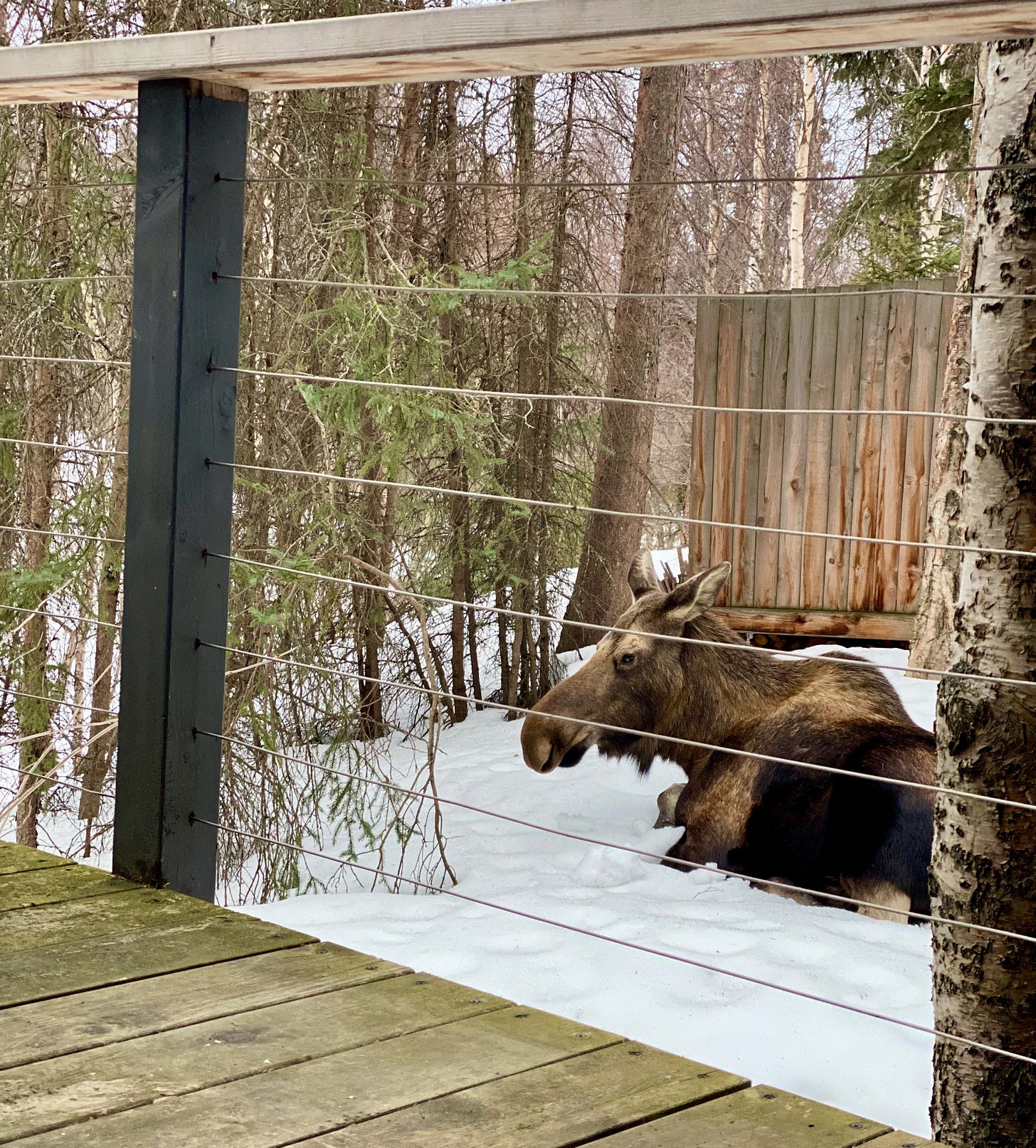
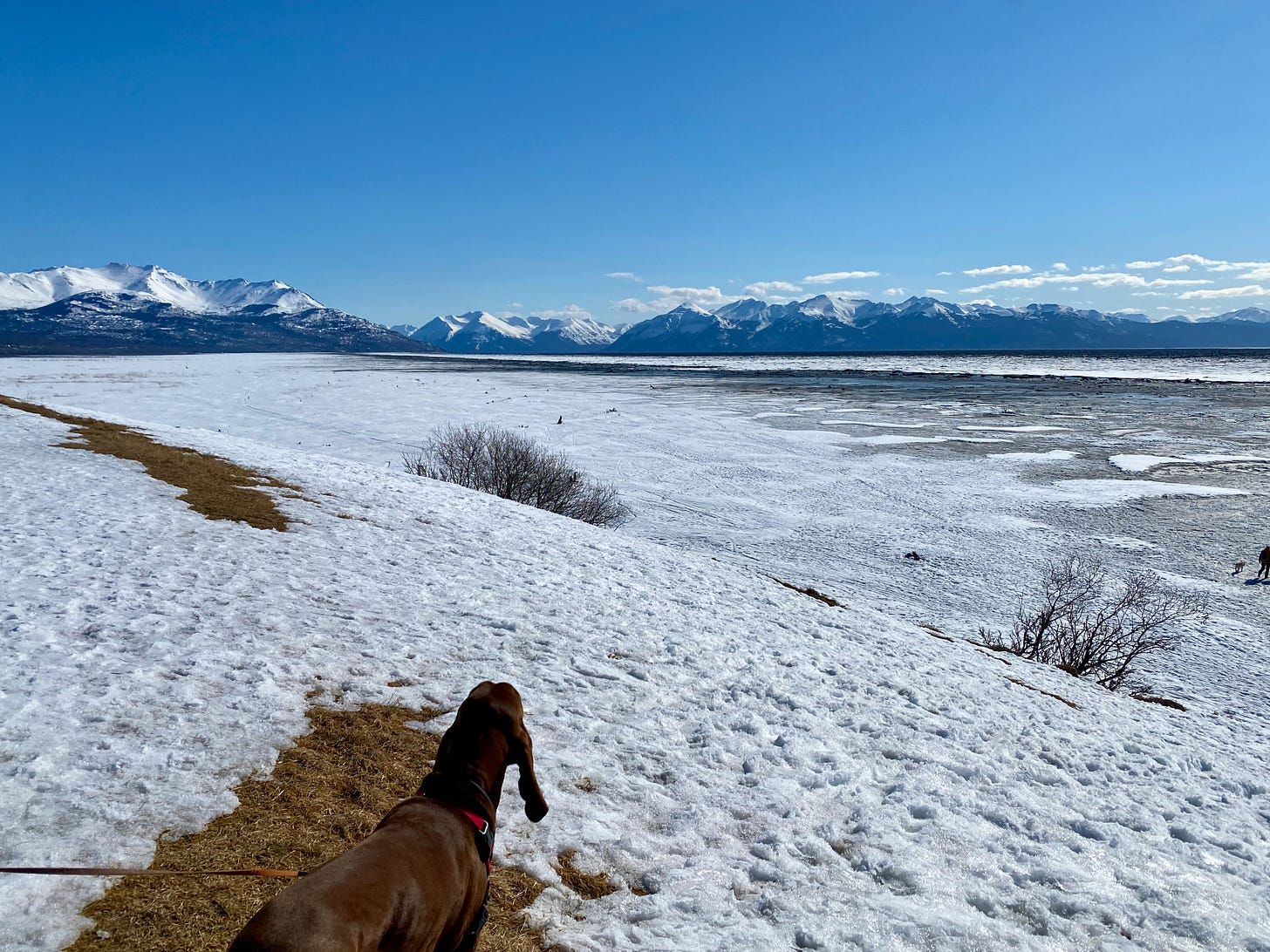
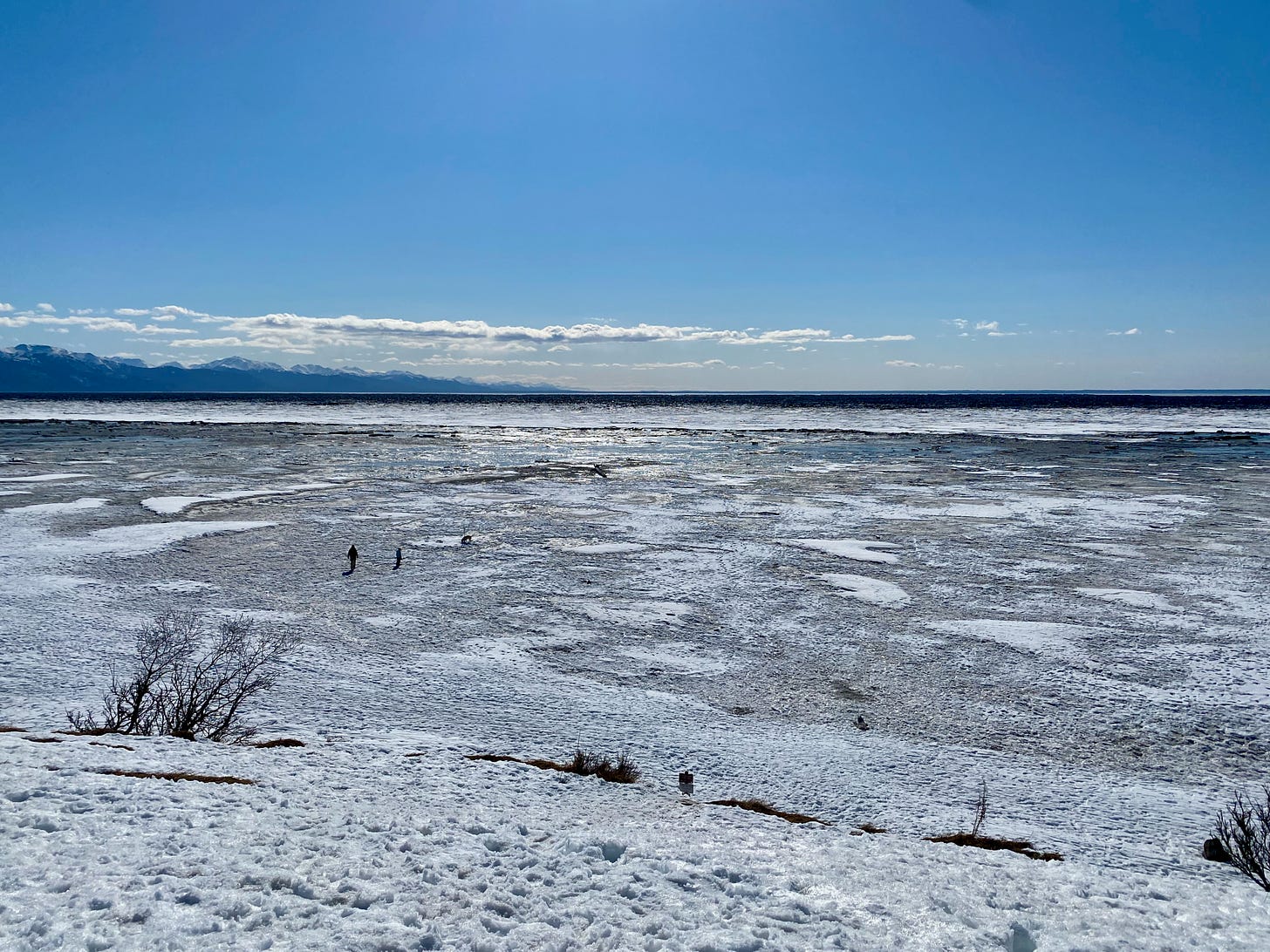

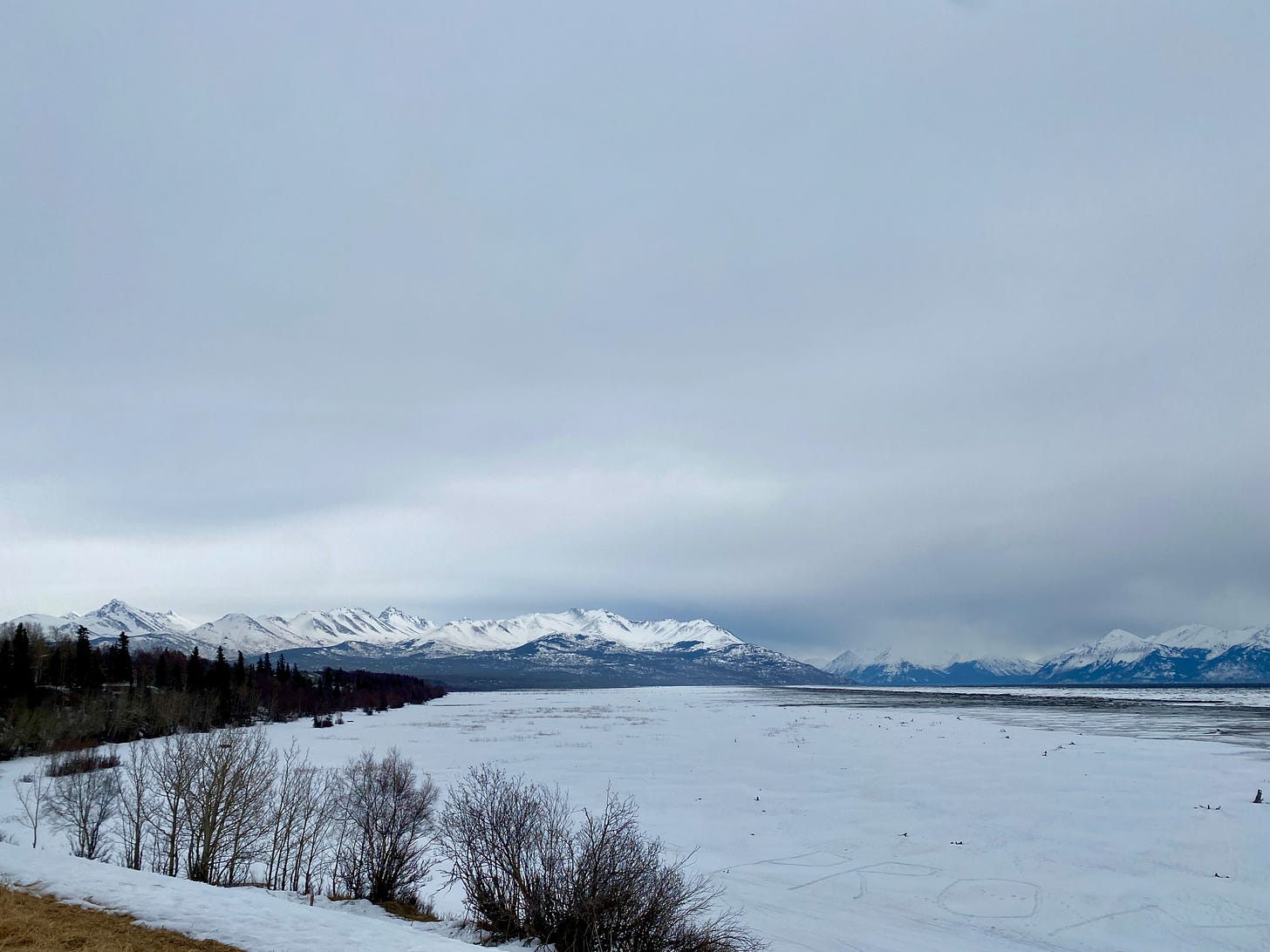
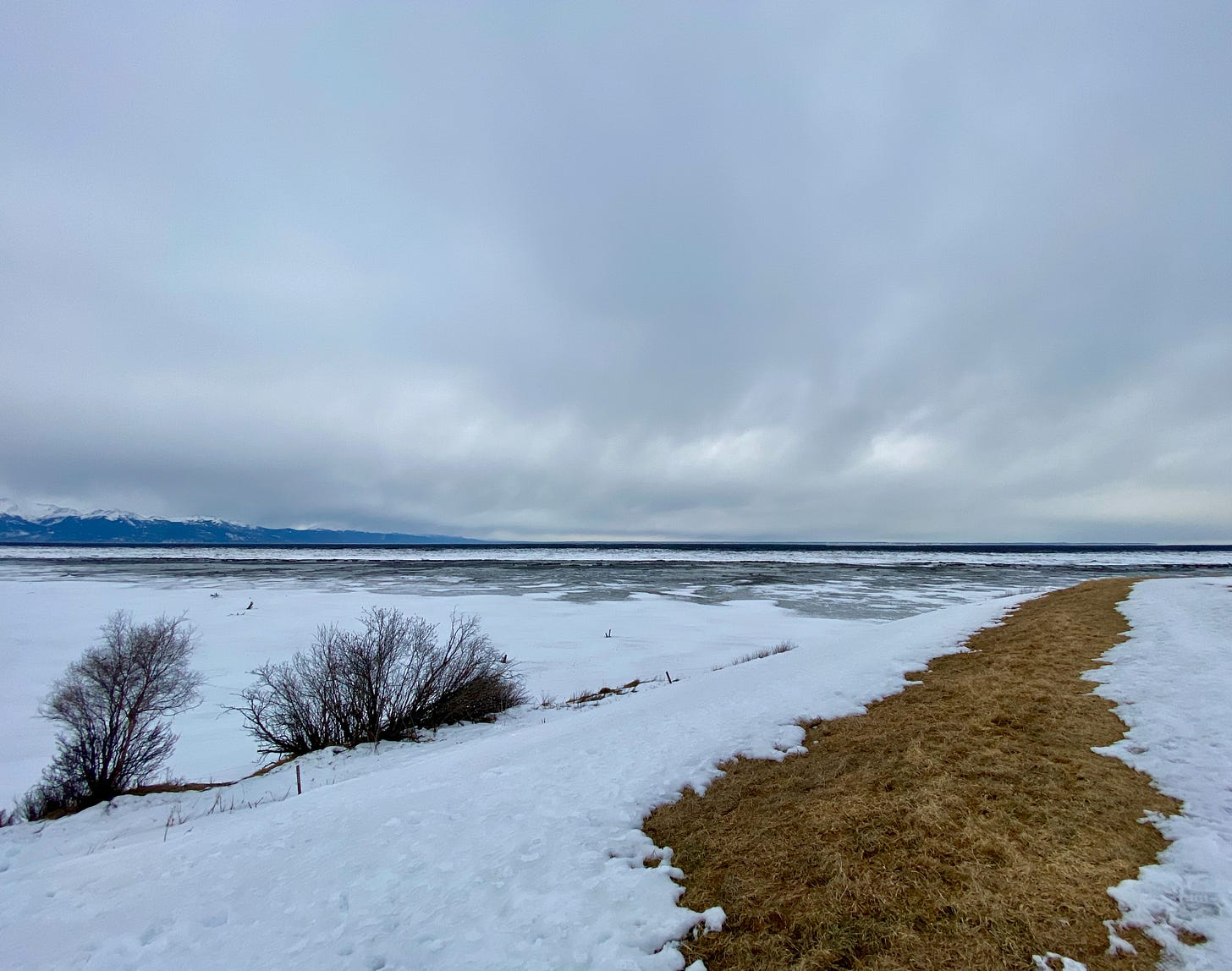
Freya what beauty you have woven through your words in this classic meditation on breath and association with being. Breath is truly the essence of life- the root, the blossoming , the being. Sanskrit for breath is ‘prana’ which translates to life force that permeates through everything in this universe - even rocks, mountains, and every blade of grass. I truly love all the beauty of your surroundings. Thank you for sharing these pictures too!
I love the moose and how she is peacefully just taking all the mutations of sounds in relaxing on the snow. Perhaps the only goal of life is to exist and observe 💜
Gorgeous, Freya. I can hardly imagine more wondrous breakfast companion. Thank you for sharing her and your beautiful words.